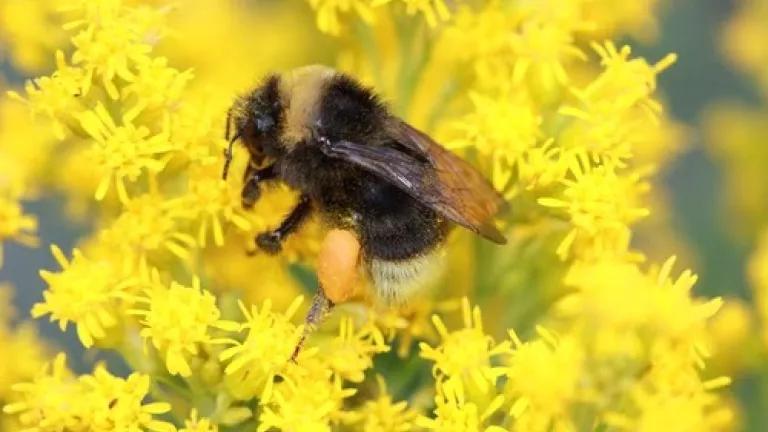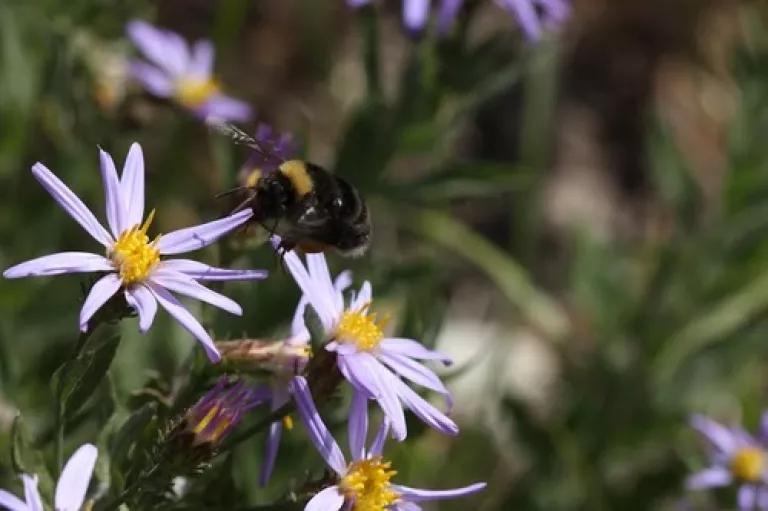
Today, we’re asking the U. S. Department of Agriculture’s Animal and Plant Health Inspection Service (APHIS) to protect our native bumble bee pollinators.
Western bumble bee (B. occidentalis) Credit: Richard Hatfield, The Xerces Society
Over the last twenty years, there has been a dramatic rise in the demand for commercially reared bumble bees to pollinate greenhouse crops, particularly tomatoes. At first, this might not seem like such a bad idea. Bees and certain plants—including tomatoes, pumpkins, potatoes, eggplants, blueberries, and cranberries—have a unique, hard to replicate, relationship. It takes a bee’s special buzz to coax the pollen out of these furtive flowers.
The problem is that evidence suggests commercial bees tend to harbor significantly more pathogens than wild bumble bees. When these infected commercial bees escape from the greenhouse, which studies confirm they regularly do, they spread their diseases to the local, native bumble bees. Bumble bee diseases can be spread from bee to bee at shared flowers.
As the use of commercial bees has gone up, the population numbers of several wild bumble bee species have plummeted. One likely cause and a leading hypothesis for the decline is the introduction of pathogens spread by commercial bees.
Almost four years ago, NRDC joined the Xerces Society, Defenders of Wildlife, and native pollinator specialist and Professor Emeritus of Entomology at UC Davis, Dr. Robbin Thorp, in filing a petition that requested that APHIS regulate the movement of commercial bumble bees in order to help control the spread of parasites to wild bees. APHIS never responded. The situation for native bees has only gotten worse.
The last reported sighting of a Franklin’s bee (Bombus franklini) was on Mt. Ashland in August of 2006. Without regulation, the western bumble bee (Bombus occidentalis), the rusty patched bumble bee (Bombus affinis), the yellowbanded bumble bee (Bombus terricola), and the American bumble bee (Bombus pensylvanicus) are each in danger of disappearing throughout significant portions of their ranges.
As we explained to APHIS in our petition and again in our letter today, pollinators are essential to our environment. They are a keystone species that provide ecological services necessary for the reproduction of 60-90% percent of the world’s flowering plants. One third of the food on our plates started with a pollinator.

Western bumble bee (B. occidentalis) Credit: Richard Hatfield, The Xerces Society
The continued unregulated shipment of bumble bees throughout the U.S. to areas outside of their native ranges poses a grave threat to wild populations of bees. Without agency intervention, we are likely to continue to see catastrophic declines, and possibly extinctions, of bumble bee pollinators. APHIS’ failure to respond to our petition and delay in protecting our wild pollinators is undue, unacceptable, and, we told APHIS, illegal.
A recent New Yorker magazine had a cartoon picture of a bee flying away from a flower. The flower is gazing, helpless, after the bee and saying “call me!” If APHIS—the agency charged with protecting animal health, animal welfare, and plant health—doesn’t act fast, that bee might never call. A lonely flower that can’t produce seeds or fruit is not just sad; it’s a serious problem for all of us.

